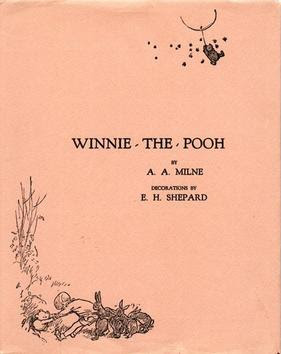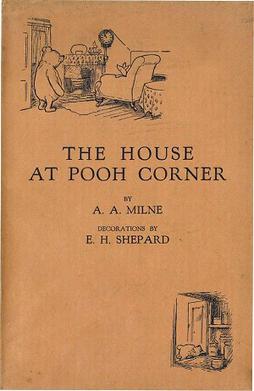credits: Elyx Yak
@UN
"Our world faces many challenges, crises and forces of division — such as poverty, violence, and human rights abuses - among many others - that undermine peace, security, development and social harmony among the world's peoples."
United Nations
The International Day of Friendship is an initiative that follows on the proposal made by UNESCO and taken up by the UN General Assembly in 1997.
It defines the Culture of Peace as a set of values, attitudes and behaviours that reject violence and endeavour to prevent conflicts by addressing their root causes with a view to solving problems.
credits: United Nations
@UN
The General Assembly recognized that enormous harm and suffering are caused to children through different forms of violence. It emphasized that the promotion of a culture of peace and non-violence should be instilled in children through education.
If children learn to live together in peace and harmony that will contribute to the strengthening of international peace and cooperation.
If children learn to live together in peace and harmony that will contribute to the strengthening of international peace and cooperation.
The Declaration and Programme of Action on a Culture of Peace adopted in 1999 set 8 areas of action for nations, organizations and individuals to undertake in order for a culture of peace to prevail:
- foster a culture of peace through education;
- promote sustainable economic and social development;
- promote respect for all human rights;
- ensure equality between women and men;
- foster democratic participation;
- advance understanding, tolerance and solidarity;
- support participatory communication and the free flow of information and knowledge;
- promote international peace and security.
The International Day of Friendship is also based on the recognition of the relevance and importance of "friendship as a noble and valuable sentiment in the lives of human beings around the world".
The International Day of Friendship was proclaimed in 2011 by the UN General Assembly with the idea that "friendship between peoples, countries, cultures and individuals can inspire peace efforts and build bridges between communities."
To mark the International Day of Friendship the UN encourages governments, international organizations and civil society groups to hold events, activities and initiatives that contribute to the efforts of the international community towards promoting a dialogue among civilizations, solidarity, mutual understanding and reconciliation.
To mark the International Day of Friendship the UN encourages governments, international organizations and civil society groups to hold events, activities and initiatives that contribute to the efforts of the international community towards promoting a dialogue among civilizations, solidarity, mutual understanding and reconciliation.
Winnie the Pooh
by A.A. Milne
illustrated by E.H. Shepard
1988
- Curiosity & Resources:
In 1998, the UN Secretary’s wife, Nane Annan, named Winnie the Pooh as the Ambassador of Friendship at the UN.
Winnie the Pooh created by the English writer A.A. Milne. Milne is most famous for his two Pooh books about a boy named Christopher Robin after his son, Christopher Robin Milne, and various characters inspired by his son's stuffed animals, most notably the bear named Winnie-the-Pooh.
Christopher Robin Milne's stuffed bear, originally named "Edward," was renamed "Winnie-the-Pooh" after a Canadian black bear named Winnie, which was used as a military mascot in World War I, and left to London Zoo during the war.
The real stuffed toys owned by Christopher Robin Milne and featured in the Winnie-the-Pooh stories
"The pooh" comes from a swan called "Pooh." E. H. Shepard illustrated the original Pooh books, using his own son's teddy, Growler, as the model. The rest of Christopher Robin Milne's toys, Piglet, Eeyore, Kanga, Roo and Tigger, were incorporated into. They are on display in the New York Public Library Main Branch in New York.
Winnie the Pooh
by A.A. Milne
ilustrated by E.H. Shepard
1st edition
Winnie-the-Pooh (1926) is the first volume of stories about Winnie-the-Pooh, written by A. A. Milne and illustrated by E. H. Shepard. It is followed by The House at Pooh Corner.
The book focuses on the adventures of a teddy bear called Winnie-the-Pooh and his friends Piglet, a small toy pig; Eeyore, a toy donkey; Owl, a live owl; and Rabbit, a live rabbit. The characters of Kanga, a toy kangaroo, and her son Roo are introduced later in the book, in the chapter entitled "In Which Kanga and Baby Roo Come to the Forest and Piglet has a Bath". The bouncy toy-tiger character of Tigger is not introduced until the sequel, The House at Pooh Corner.
The House at Pooh Corner
Winnie the Pooh
by A.A. Milne
ilustrated by E.H. Shepard
1st edition
A. A. Milne's stories, and two characters – Rabbit and Owl – were created by Milne's imagination.
Winnie the Pooh is, of course, the perfect Ambassador of Friendship. He is adorable and timeless. He believes in diversity and welcoming all friends. Pooh is an optimist and a ‘people bear’. He is committed to his friends... and honey! And, he is wise way beyond his years, especially for a bear with very little brain.
Note: Students can read or ear Winnie the Pooh online (1998 edition, original book). And share the special role played in their friendship by Winnie the Pooh.
Winnie-the-Pooh
The Complete Collection of Stories and Poems
A.A. Milne
E.H. Shepard
The beautiful new edition, re-designed for Pooh's 90th anniversary in 2016, brings together four volumes in one stunning gift book:
A. A. Milne's Winnie-the-Pooh is nothing less than a true children's classic. Winnie-the-Pooh may be a bear of very little brain, but thanks to his friends Piglet, Eeyore and, of course, Christopher Robin, he's never far from an adventure.
- Winnie-the-Pooh,
- The House at Pooh Corner,
- When We Were Very Young,
- Now We Are Six.
Education:
"Friendship & solidarity can inspire peace."
UN (United Nations)
"Through friendship - by accumulating bonds of camaraderie and developing strong ties of trust - students can contribute to the fundamental shifts that are urgently needed to achieve lasting stability, weave a safety net that will protect us all, and generate passion for a better world where all are united for the greater good."
International Friendship Day places particular emphasis on involving young people, as future leaders, in community activities that include different cultures and promote international understanding and respect for diversity.
The need to have an educational system which promotes the value of piece is so important! And that begins in younger ages at school.
Involving young people, as future citizens and young leaders, in school activities that include different cultures, promote international understanding and respect for diversity, and defending a shared spirit of human solidarity that takes many forms - the simplest of which is friendship.
Involving young people, as future citizens and young leaders, in school activities that include different cultures, promote international understanding and respect for diversity, and defending a shared spirit of human solidarity that takes many forms - the simplest of which is friendship.
Activities:
- Organise activities throughout the year that help raise awareness of Friendship Day by encouraging students, parents and community to join a Friendship campaign;
- Small ideas and actions for culture of peace at the school level need to be contextualised in the greater level of world peace and the Global Goals;
- Choose to mark the day, whatever the scale of students activity, their commitment matters;
- Invite your students to create curricular activities at school and sharing with schoolmates from different schools, in different countries, using social media as an exchange project.
- Help to spread the word about Friendship or attend an event in your city or community.
Let us all work towards a movement for ‘everyday peace’, ‘total peace’, ‘noble peace’ where peace is a process not an event.
G-Souto
30.07.2018
30.07.2018
update 30-07.2024
Copyright © 2018G-Souto'sBlog, gsouto-digitalteacher.blogspot.com®

Schools : Intl Day of Friendship ! Resources & he Legacy : resources & stories by G-Souto is licensed under a Creative Commons Attribution-NonCommercial-NoDerivatives 4.0 International License.
References: UN









No comments:
Post a Comment